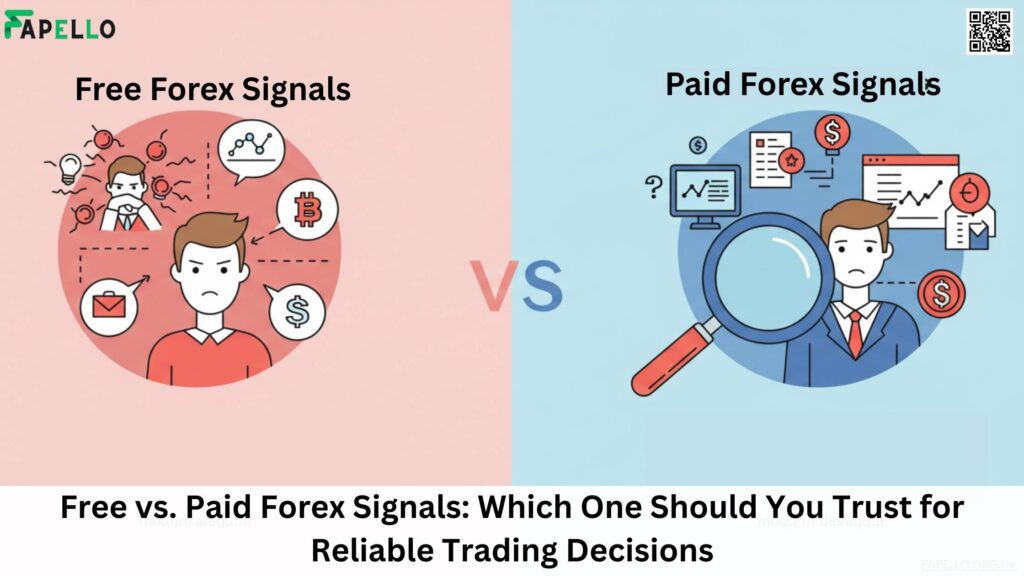People who trade currencies often look for an edge, and Forex trading signals with real-time updates can seem like an easy way to get it. Both free and paid signals are popular, but not all of them are worth trusting. Paid signals are usually more consistent and better supported than free ones, but it’s important to remember that no signal service can guarantee profits.
Free signals might be easy to find, but they can lack transparency and often don’t provide enough information for smart decision-making. When deciding which to trust, traders should focus on Forex trading signals with real-time updates that are clear about their methods and offer useful, timely information.
Each type of signal comes with risks and rewards. Understanding the difference between free and paid signals will help traders make more confident choices and avoid common mistakes.

Key Differences Between Free and Paid Forex Signals
Both free and paid forex signals can help traders make decisions, but there are key differences in where they come from, how correct they tend to be, and what extra features they offer. Understanding these differences can help traders decide what fits their needs best.
Source and Provider Transparency
Free forex signals often come from unknown sources, like forums or social media posts. The people or systems behind these signals may not share how they create their recommendations. This lack of clarity can make it hard to judge if the signal can be trusted.
Paid forex signals often show more information about who is providing them. The teams behind paid signals usually have experience in trading or use advanced tools to pick their trades. Many paid services share details about past results, trading strategies, and the methods used to generate signals. Transparency can give traders more confidence when choosing signals.
Signal Accuracy and Reliability
Free signals can be appealing since there is no cost, but their success rate can vary a lot. Because there is rarely quality control or proof of past results, some free signals can be inaccurate or out of date.
Paid signals are usually monitored and checked by their providers before being shared with users. These signals often use statistical analysis or trading algorithms to try and improve their accuracy. Many paid services offer performance records, so users can verify if past trades have done well. Higher accuracy can reduce the chance of large unexpected losses.
Access to Analytical Tools and Features
Free forex signals usually come with no extra tools or support. They may just tell a trader when to buy or sell, but give no deeper explanation or analysis. If a trader wants to ask questions or see more data, that support often is not there.
Paid signal providers tend to include more features with their service. These can include detailed charts, risk management tips, and customer support. Some paid services send signals through an app, email, or text alerts, making updates fast and convenient. Extra tools and guidance can help newer traders better understand the choices they are making.
Evaluating Which Forex Signals to Trust
People looking at forex signals need to focus on the trustworthiness of the provider, how well their signals have worked in the past, and what kind of support and risk precautions come with the service. A careful review of these features can help avoid mistakes and losses.
Identifying Reputable Signal Providers
A good signal provider is open about their track record, real performance data, and trading strategies. Look for providers who clearly show who is behind the service and explain how their signals are created.
Feedback from current users can reveal the typical experience, including if signals arrive on time and if the provider is easy to contact. Details about trading methods and background often mean the provider is not hiding important information.
Always check for honest reviews and any signs of bad practice, like bold profit promises or confusing fees. Providers who are open about risks and never guarantee results often have better reputations in the trading community.
Assessing Performance Records
Checking past signal results helps show how often the provider made accurate predictions. The best way is to ask for data covering months or years, not just a few lucky trades.
Look for clear data and charts that match what was actually happening in the market at the time. Third-party websites that track trades can sometimes help confirm that these numbers are accurate.
Be wary of providers who only highlight wins and avoid talking about losses. A steady, modest success rate is more realistic than claims of always being right. Consistent reporting and updates allow users to see if the results hold up over time.
Risk Management and Support Services
Good signal services often offer risk advice, alerts, and clear stop-loss or take-profit instructions. These features help users protect their accounts against big losses if the market changes quickly.
Responsive customer support shows that the provider values its users. Options like chat, email, or even regular updates on changing market conditions can make the service easier to use.
Long-term users may get special guidance or help understanding why a specific signal was given. This support is helpful for both new and experienced traders who want to grow their knowledge and keep their risk low.
Conclusion
Free forex signals are simple to access and do not require payment. They often give traders a way to try out different trading ideas without needing to spend money first. However, these signals can sometimes lack consistency or detailed analysis.
Paid signals usually cost a fee but may come with more detailed research, explanations, and a higher chance of steady performance. Some traders find value in these extra features when making decisions.
Both types of signals have benefits and downsides. The right choice depends on each trader’s needs, goals, and level of experience. Taking time to test and compare can help traders decide which signal is best for their style.






